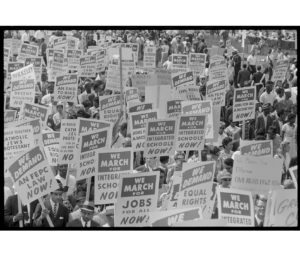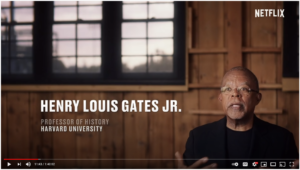The Kenmore Elementary Parent Teacher Association (KEPTA) does not assume any responsibility or liability for the content that may be present within external Websites linked to and from this site that are operated or created by or for organizations outside of KEPTA. The linking to or from this site does not imply on the part of KEPTA or any of its volunteers guarantee of quality, assumption of liability or endorsement of the organizations maintaining external Websites. Those organizations are solely responsible for the operation of their Website and quality of the content including advertisements, links, media, images and text that they may deem appropriate. The mention of any business or service in this website does not imply endorsement by KEPTA.
Welcome to our KEPTA REJ Connections Page! Each month our REJ committee will provide our Kenmore Cub community with family read alouds, activities, short videos and resources to assist our community growth in racial literacy, cultural competency and equitable education. We hope these monthly resources will inspire courageous conversations about racial injustice, equity and youth activism in our homes. We are KENMORE–nurturing brave, inclusive, and empathetic children alongside one another!
Definition
Nadine Bloch describes resistance as the broad use of arts, literature, and traditional practices to challenge or fight unjust or oppressive systems and/or power holders within the context of nonviolent actions, campaigns, and movements. When advocating for peaceful protests, Dr. King stated that we have a moral obligation to obey just laws as we do, a moral obligation, to resist unjust laws. It is important to understand the various forms of resistance against systems of oppression that exist, along with the themes that are a through line in the histories of multicultural resistance locally, nationally, and globally. It is also important to know the historical contexts of resistance and understand why they originated, by who and what happened then that influences us now. Understanding this also helps us confront the historical narratives we have been told. Over the course of history, cultural resistance tactics have been a way to reclaim humanity and cultivate solidarity within and across communities.
-Melissa Riley, Assistant Director of Equity Pedagogy, NSD
-Ayva Thomas, Assistant Director of Racial and Educational Justice
-Ranna Harb, Racial and Educational Justice Specialist
Family Activity
Children’s Books – Read-aloud
 If You Were a Kid During the Civil Rights Movement by Gwendolyn Hooks. A fictional account of two black children experiencing the civil rights movement for racial justice in the 1960s.
If You Were a Kid During the Civil Rights Movement by Gwendolyn Hooks. A fictional account of two black children experiencing the civil rights movement for racial justice in the 1960s.
Harvesting Hope: The Story of Cesar Chavez. by Kathleen Krull. Chavez was an important organizer and activist for Filipino and Mexican farm workers in California.
Family Activity
Inspiring Change and Taking Action

Signs carried by many marchers, during the March on Washington, 1963. (Marion Trikosko, Library of Congress)
Dr. Martin Luther King Jr. described nonviolent protests as “a courageous confrontation of evil by the power of love,” and that they would “bring about a transformation and change of heart.” Nonviolent protests use actions other than violence to get the attention of the public and lawmakers and bring about social change.
Demonstrations and marches are effective forms of nonviolent protest. In demonstrations, people gather in a group in a visible place, such as a main street. A march is when a group of protesters march on a visible route from one place to another, often in large groups. At protests, there are often speakers, musicians, ministers, and others who address the crowd and inspire change as Dr. King did during the civil rights movements of the 1950s and 1960s.
During nonviolent protests, people call the attention of the public and lawmakers to their cause by holding protest signs up with their message in big, bold letters and pictures. They may sing or chant their message as well.
How can you inspire change? What do you think would make Kenmore Elementary, our community, our country or the world a better place for everyone? You can create your own protest sign, song, poem or letter to share your voice.
Kid Examples:
Kenmore Cub’s example of protest sign

Seattle middle school students example of song:
Family Listen
Seattle middle school students just released this song for BLM at school.
Family Connections
Discuss with your children how they may develop a strong voice about important issues. See The Purpose and Power of Protest (adl.org) for essential family conversation topics.
Adult Resources
Watch
 13th Director Ava DuVernay’s ground-breaking film examines how racial inequality drives the incarceration rate in the U.S. Available for free on YouTube and Netflix.
13th Director Ava DuVernay’s ground-breaking film examines how racial inequality drives the incarceration rate in the U.S. Available for free on YouTube and Netflix.
Read
Explore the Seattle Civil Rights and Labor History Project, a collection of articles, interviews, films and more about the struggle for civil rights in our own communities!
Seattle Civil Rights and Labor History Project (washington.edu)
Listen
‘1619,’ a podcast from The New York Times, explores how slavery has affected our country in the past and present.
Course
The American Civil Rights Movement. Free open course that focuses on the civil rights movement for racial justice in the 1950s and 1960s.
Important Demonstrations and Marches in the U.S.
The U.S. has a long history of people fighting for civil rights. Here are a few notable events:
1913: The first major demonstration for women’s right to vote. A parade was held down Pennsylvania Avenue in Washington, DC.
1963: The March on Washington. Hundreds of thousands of people marched to protest racism. Dr. King gave his famous “I Have a Dream“ speech.
1965: United Farm Workers Movements. Cesar Chavez led a movement to fight for unionization, higher pay, and better working conditions for Mexican and Filipino farm workers.
1969: Stonewall Riots in New York City, there were a series of spontaneous demonstrations against brutality towards LGBTQ people.
1977: The 504 Sit-in was a disability rights protest that began on April 5, 1977. People with disabilities and the disability community occupied federal buildings in the United States in order to push the issuance of long-delayed regulations regarding Section 504 of the Rehabilitation Act of 1973.
2016: Dakota Access Pipeline Protests. Native Americans led a protest against the construction of an oil pipeline that threatened sacred areas and their water supply.
2017: The first Women’s March. This brought millions of women and their allies from around the world together to protest sexism, racism, and more. There were marches in communities everywhere, even Antarctica!
2013-present: Black Lives Matter. People gather nationwide to protest police brutality against Black people, with numerous cases involving unarmed victims.
Your voice matters! Join us.
